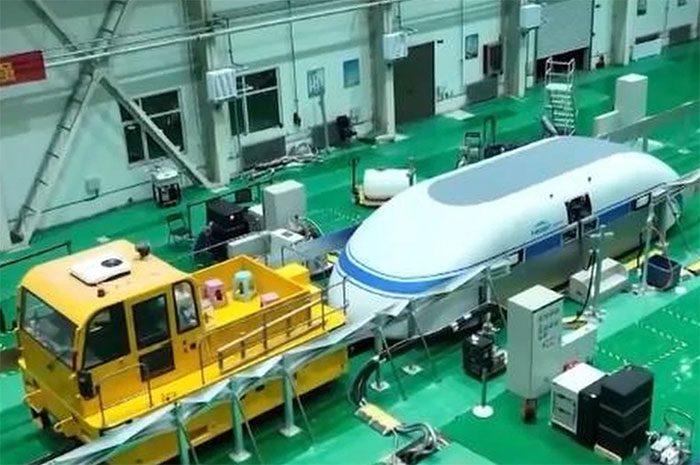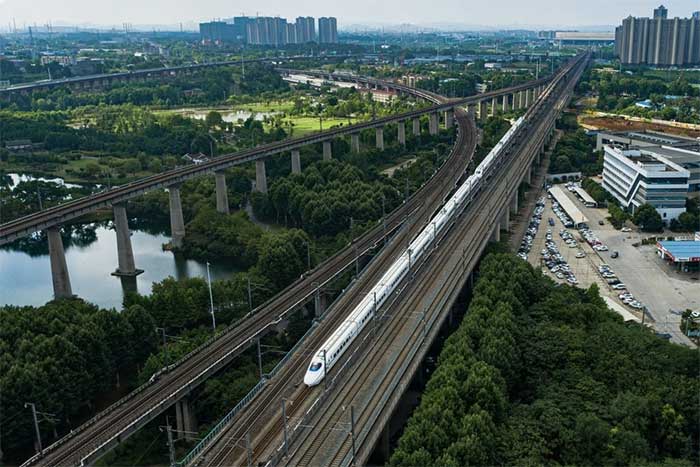The technology of super-fast maglev trains is designed to reach speeds of up to 1,000 km/h, surpassing that of commercial airplanes.
Recently, The China Aerospace Science and Industry Corporation (CASIC) announced that they have set a new speed record with technology applied to superconducting maglev trains during a test run over a distance of 2 km.

Maglev train compartment during the 2 km test run. (Photo: CCTV).
This is seen as a precursor to the Hyperloop system, which promises ultra-fast speeds and could be implemented in the near future. Although the exact speed of this test has not been revealed, CASIC asserts they have achieved “a significant breakthrough.”
The organization stated that the results of the test exceeded the previous record of 623 km/h, which was set by a superconducting maglev vehicle operating under non-vacuum conditions.
According to CASIC, this is the first time a maglev train has achieved a stable speed while traveling on a low-pressure vacuum tube system, which was completed in November 2023.
Superconducting maglev technology works by “levitating” the train to eliminate friction while moving through specially designed low-pressure vacuum tubes. This method creates conditions close to a vacuum, reducing air resistance and approaching a “near-ground flight” experience at extremely high speeds.

CASIC’s high-speed train project designed to reach speeds of 1,000 km/h. (Photo: SCMP).
According to SCMP, the high-speed train project, which integrates aviation and land-based railway technologies from CASIC, is designed to reach speeds of up to 1,000 km/h, meaning it surpasses even commercial airplane speeds.
CASIC noted that the test not only set a new speed record for the system but also confirmed the compatibility of several technologies, demonstrating their effective coordination.
In this context, precision is extremely important, as every detail has a deviation of less than 1 mm from the contact surface. Notably, the difference in the flatness of the track cannot exceed 0.3 mm.
CASIC also emphasized that these advancements have improved the overall technical perfection of the system, laying a solid technical foundation for higher-speed tests in the future and establishing a national transportation network.


















































